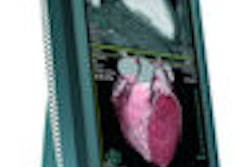CHARLOTTE, NC - When you're a PACS administrator, it can be easy to lose yourself in managing the bits and bytes involved in keeping your network running smoothly. But administrators shouldn't neglect the crucial task of providing quality training and education to PACS network users, according to Richard "Skip" Kennedy, technical director of imaging informatics at Kaiser Permanente's Northern California division in Oakland, CA.
"[PACS administrators] need to be familiar with at least the essentials of [training methods, theory, and processes]," he said. "Expertise in technology is necessary, but it's not a sufficient condition. In other words, you could be extremely good with [understanding] workstations, and really quite bad at communicating that to a radiologist. So they are different skill sets, and I think most of us need to work continually on our communication skills and our ability to train."
Kennedy spoke about training during a Thursday session at the annual meeting of the Society for Imaging Informatics in Medicine (SIIM), held this week in Charlotte, NC.
In the PACS environment, user roles vary, and training needs to be based on their individual requirements. Healthcare providers make up the largest user group, and their interaction typically involves downloading a Web viewer.
The training for this group is relatively minor but still critical, Kennedy said. If your institution's PACS is integrated with an electronic medical record (EMR), providers will also need to receive EMR training, he said.
Technologists typically perform quality assurance/quality control as well as data management functions, and they should receive training geared toward those tasks. Radiologists are the most demanding group in terms of training requirements, requiring an ongoing focus on workflow efficiencies, Kennedy said.
PACS administrators naturally focus on administrative tools but must also learn all aspects of the system to train others, Kennedy said.
Training should also take into account the types of learning methods: visual, auditory, and kinesthetic, Kennedy said.
"There are certain ways of teaching and approaching all three of those models that are optimal for that model, but may not work for others," he said. "One of the things I want to urge is to be flexible. There are people who are very strongly one or the other; some people are balanced, but some can really only learn one way. To train that person and to be effective, you have to recognize those types and be able to adapt the training session."
Visual learners prefer seeing what they are learning; pictures and images help them understand ideas. Screen shots and video clips are powerful tools for visual learners, he said.
Auditory learners prefer to hear the message or instruction being given, and these adults prefer to have someone talk them through a process, according to Kennedy. Web training with voice overlays (Webinars) is a powerful tool for them.
Kinesthetic learners want to sense the positional movement of the skill or task, preferring to learn techniques that allow them to "do something," according to Kennedy. These folks will have to go through training in a kinesthetic fashion to process the training.
PACS training varies from basic (simple Web access by providers) to very complex (radiologist primary interpretation and workflow optimization), Kennedy said. "Training processes need to vary by the role and by the individual," he said.
The vendor-provided applications training model is only the beginning of the training process, he said. With new users, new software versions, and new user roles, training will be a constant process.
In terms of training roles, applications specialists (typically supplied by the PACS vendor) can be included in a training program, along with PACS administrators. One tactic that can also be employed is the "super-user" concept, in which a radiologist or technologist is trained and subsequently trains his or her colleagues.
Training tools that can be utilized include computer-based training, knowledge bases/wikis, and Webinars for distance or group learning, he said. Web-based training is quickly overtaking classroom training for procedural adult learning for applications such as PACS, he said.
"[Classroom training] is inefficient when you're using physician time," he said.
Kennedy concluded by saying that PACS administrators need to pursue multiple types of training strategies and offer training adapted to an individual's learning style and role. In addition, continuous training should be provided.
New tools should also be leveraged, including computer-based training, remote access/collaboration tools, and skills assessment automation, Kennedy said.
By Erik L. Ridley
AuntMinnie.com staff writer
June 5, 2009
Related Reading
PACS administration: A look into the crystal ball, October 13, 2008
ABII adds new CIIPs, April 22, 2008
PACS administrator certification: CIIP or PARCA? September 20, 2007
PACS administrator certification program gets under way, May 30, 2007
SIIM readies qualification program for PACS administrators, November 15, 2006
Copyright © 2009 AuntMinnie.com




















